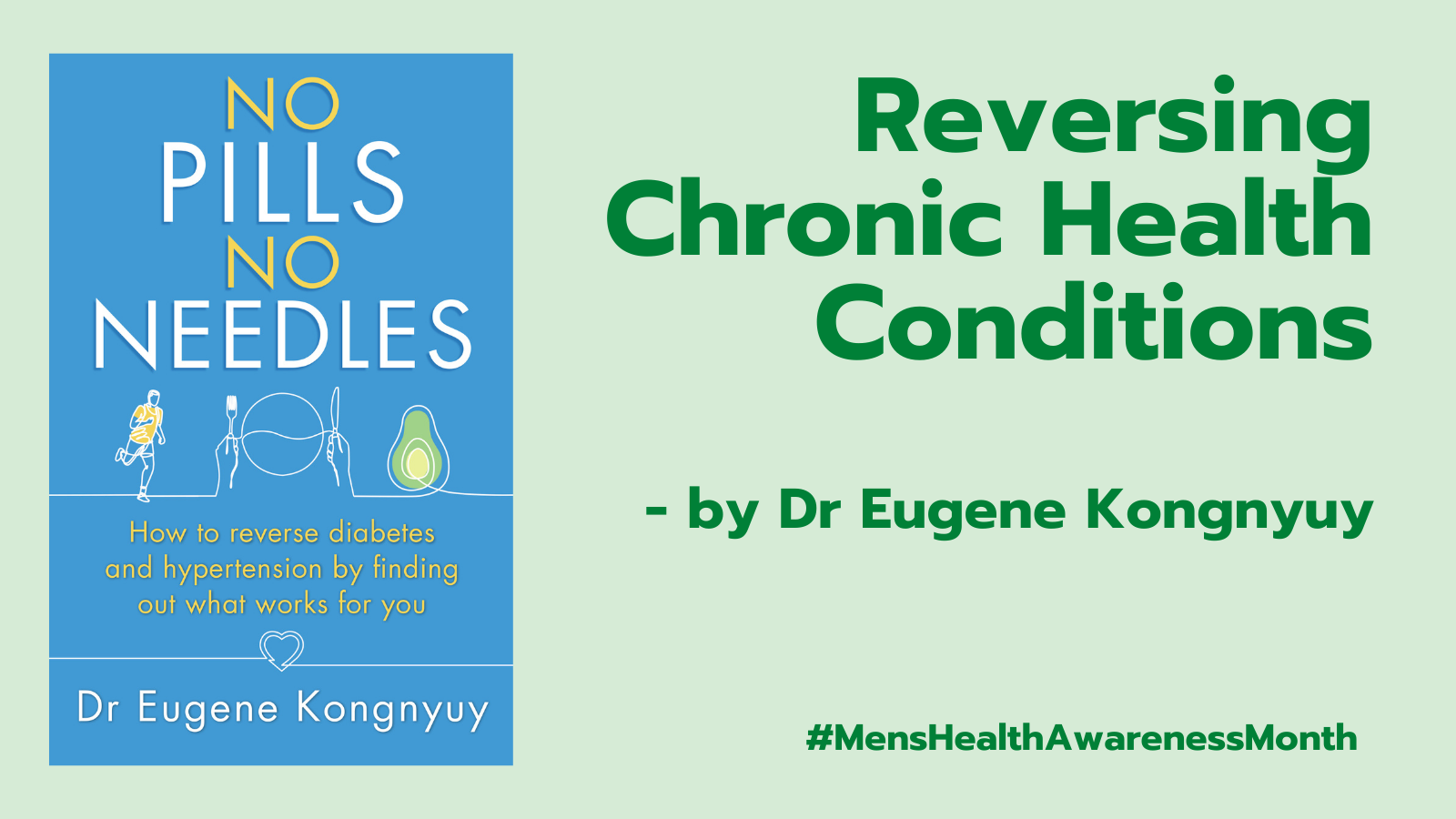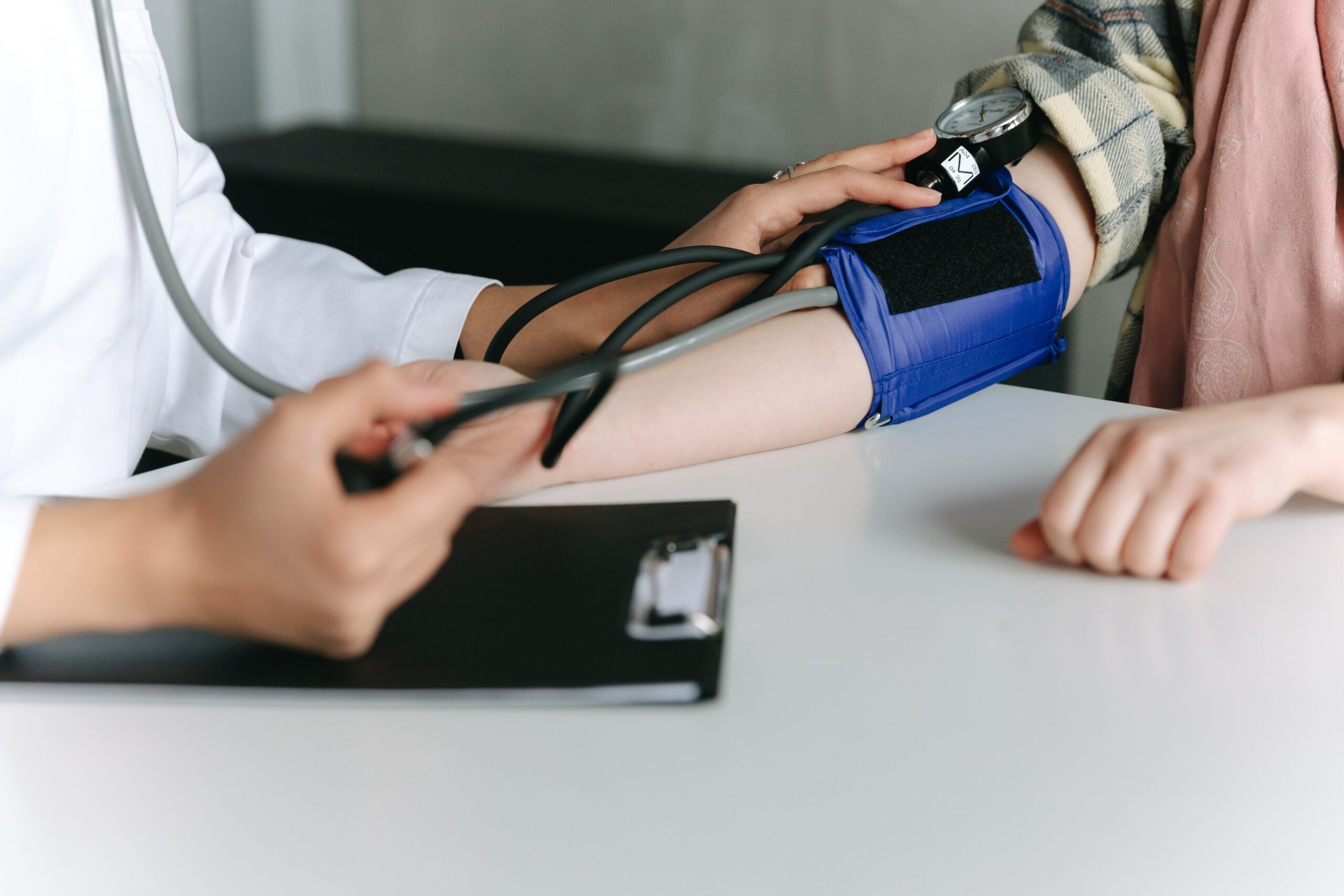
Blog post written by Dr Eugene Kongnyuy, author of ‘No Pills, No Needles’.
Ten years ago, I was diagnosed with both type 2 diabetes and high blood pressure (hypertension). My GP prescribed Metformin for my diabetes and Ramipril for my hypertension. I was shocked and devastated because as a physician I had always thought that these two conditions were incurable. The diagnosis was like a death sentence to me because I knew its implications. Nonetheless I asked myself: ‘If diabetes and hypertension are caused by unhealthy lifestyle, shouldn’t it possible to reverse them if one switches to a healthy one?’ I decided that I would self-experiment through trial and error. I didn’t follow any complicated research rules. I was the patient and the researcher. My aim was to find out what could successfully reverse my diabetes and hypertension so that I could stop taking medicines.
Intuitively, I followed three simple steps: I ‘try’ something, I ‘track’ my blood sugar and blood pressure, and I ‘tell’ whether or not it works. Over five years, I tried out over 70 different things involving different diets and lifestyle changes.
Reversing my diabetes
After 29 unsuccessful trials (over two years), the 30th trial successful reversed my diabetes (but not my hypertension). The trial consisted of stopping eating lunch, which made me lose 10 kg. The first week was difficult because lunch was more than a meal to me – it was an opportunity to socialise and have informal discussions with my colleagues. Missing lunch meant missing the fun and merrymaking with friends. However, with strong willpower, I managed not to eat at lunchtime. I joined my friends during lunch but drank water instead of eating. In three months, I then lost those 10 kg of weight and my BMI (Body Mass Index) dropped from 26.1 to 22.8. My blood sugar went down to levels I had never seen before. I stopped taking Metformin and the diabetes was gone. A series of laboratory tests with my GP confirmed that the diabetes had been reversed.
It was in fact the weight loss that reversed my diabetes – missing lunch simply helped me to lose weight. A recent study, published in the Lancet and involving 685,616 adults, revealed a BMI of 23 or higher significantly increased the risk of diabetes (see reference 1 below). The findings of this study are consistent with my personal experience – weight loss is the centre-piece of diabetes reversal.
Reversing my hypertension
After reversing my diabetes, I continued with self-experiments with the hope of finding a cure for hypertension. After five years of self-experimenting (70 trials in total), none of the things I tried proved able to reverse my hypertension and I felt disappointed. Then one day I was challenged by my sister-in-law, Charlotte, who was (and still is) running for 150 minutes a day to lose and maintain her weight. I went out for morning exercise with her. That day, I realised I needed to do more.
Over a month, I gradually increased my daily exercise from zero to 1 hour per day. That was a turning point in my life because I hated exercise and I still believe no one hates exercise as much as I did then. Six months after starting 1 hour per day of regular exercise, I took my blood pressure (BP) and it was very low. I stopped the BP medicine and my hypertension was gone. One hour of regular, moderate- to high-intensity exercise per day may be what you need to reverse your own high BP. Moderate to vigorous exercise, especially of a type that makes you sweat, is the centrepiece for the prevention or reversal of high blood pressure.
Reverse lifestyle diseases with lifestyle changes
Diabetes and hypertension are lifestyle diseases and can be reversed by adopting the appropriate lifestyle. It’s not easy to change our lifestyle. Some of the things that worked for me include strong willpower, support from family and friends, and making exercise fun – I play music (a motivational fitness song) when exercising. With behaviour change, ‘start small, think long-term’.
There are other benefits to weight loss and exercise, apart from reversing diabetes and hypertension. I’m physically stronger and regular exercise boosts my self-esteem, makes me concentrate, sleep and feel better. It helps me to combat stress and I feel better mentally.
Over the years, I have kept with 1 hour of exercise per day while tracking my BP and blood sugar, and I have learned a lot more. I have also continued practising my ‘no lunch’ strategy. My blood sugar and BP have remained within the normal ranges. I have continued to learn from personal experience. Initially I wasn’t thinking of sharing this experience. It was the arrival of the Covid-19 pandemic, which showed a higher mortality rate amongst people with diabetes, that pushed me to decide to share my experience. If it worked for me, it can work for many, and the methods I used to explore my own health can be applied by anyone to find out what works for them. You will find all my lessons in my book ‘No Pills, No Needles – how to reverse diabetes and hypertension by finding out what works for you’.
References
- Teufel F, Seiglie JA, Geldsetzer P, Theilmann M, Marcus ME, Ebert C, et al. (2021). Body-mass index and diabetes risk in 57 low-income and middle-income countries: a cross-sectional study of nationally representative, individual-level data in 685 616 adults. Lancet 2021; 398(10296): 238-248.

